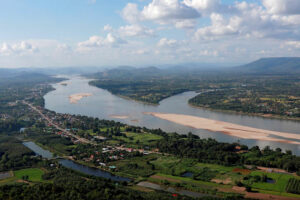BANGKOK — Unsustainable development threatens the health and diverse fish populations of the Mekong river, with one-fifth of fish species in Southeast Asia’s main artery facing extinction, a report by conservation groups said on Monday.
The Mekong, stretching nearly 5,000 km (3,000 miles) from the Tibetan Plateau to the South China Sea, is a farming and fishing lifeline for tens of millions of people in China, Laos, Myanmar, Thailand, Cambodia and Vietnam.
Threats to its fish include habitat loss, conversion of wetlands for agriculture and aquaculture, unsustainable sand mining, introduction of invasive species, worsening climate change and hydropower dams fragmenting the flow of the river and its tributaries, according to the report compiled by the World Wildlife Fund and 25 global marine and wildlife conservation groups.
“The biggest threat right now, and a threat that’s still potentially gaining momentum, is hydropower development,” said fish biologist Zeb Hogan, who heads the Wonders of the Mekong, one of the groups behind the report.
Dams alter the flow of the world’s third-most biodiverse river, change water quality and block fish migration, he said.
Proliferating Chinese-built hydroelectric dams upriver have blocked much of the sediment that provides essential nutrients to tens of thousands of farms in the Mekong River Delta, Reuters reported in 2022.
Some 19% of the 1,148 or more fish species in the Mekong are heading towards extinction, said the conservationists’ report, “The Mekong’s Forgotten Fishes,” adding that the number may be higher as too little is known about 38% of the species to gauge their conservation status.
Among those facing extinction are 18 species listed as “critically endangered” by the International Union for Conservation of Nature, including two of the world’s largest catfish, the world’s largest carp and the giant freshwater stingray.
“Some of the largest and rarest fish… anywhere on earth occur on the Mekong River,” Mr. Hogan said.
Fish depletion in the Mekong – which accounts for over 15% of the world inland catch, generating over $11 billion annually – could harm food security for at least 40 million people in the Lower Mekong basin whose livelihood depends on the river, the report said.
Hogan said it was “not too late” for countries in the delta to coordinate efforts to reverse the adverse impacts on the fish population.
“If we take action, collectively take action, to develop the river sustainably, there’s still hope,” he said. — Reuters
